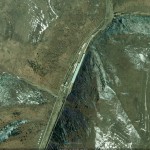According to the Daily NK:
Three North Korean Senior Middle School students have been caught trying to carry explosives into North Korea, according to a Radio Free Asia (RFA) report today.
Citing a source from Hyesan, RFA reported, “On the 11th, immediately after Chosun Workers’ Party founding day, 15-year old Songbong Senior Middle School student Kang and two others were caught trying to bring explosives in from China,” adding, “As a result of this, the security authorities have been put on emergency alert and the border totally closed.”
The RFA report explains that the three crossed the border into China with the help of border guards and smuggled back 10kg of explosives in two bags, but were caught at the entrance to a village by a community watch guard unit consisting of workers.
According to another source, “I’ve heard a number of rumors, including that they brought the explosives to destroy the bridge that passes by Wangdeok Station.” However, the source added, “Whether this is true or not I cannot say.”
Wangdeok Station is among a number of stations in North Korea on lines reserved for the exclusive use of Kim Jong Il.
The North Korean authorities are apparently at a loss to explain the case, because the students were just the children of normal workers; they did not have criminal records and were only interested in literature and reading.
Since the event occurred, the Yangkang Province authorities have stepped up security, with provincial committee cadres and students from Hyesan Agriculture University patrolling in the area around Bocheonbo Combat Victory Monument and the local statue of Kim Il Sung. They have also dispatched tens of guards to idolization sites such as Hyesan Revolutionary Museum and Kim Il Sung Revolutionary Activities Institute.
The report also added information on further similar cases: in 1997, a group of people were arrested after smuggling explosives into the country, allegedly in order to blow up the city’s statue of Kim Il Sung, and there has also been an arson case involving Kim Jong Suk Art Theatre and persons with complaints against the Kim Jong Il system.
It should be stated that stories such as these should be regarded with some skepticism since almost all of the facts are unverifiable.
For what it is worth, here is a satellite image of the Wangdeok Leadership Train Station in Hyesan ( 41.448124°, 128.277445°):

